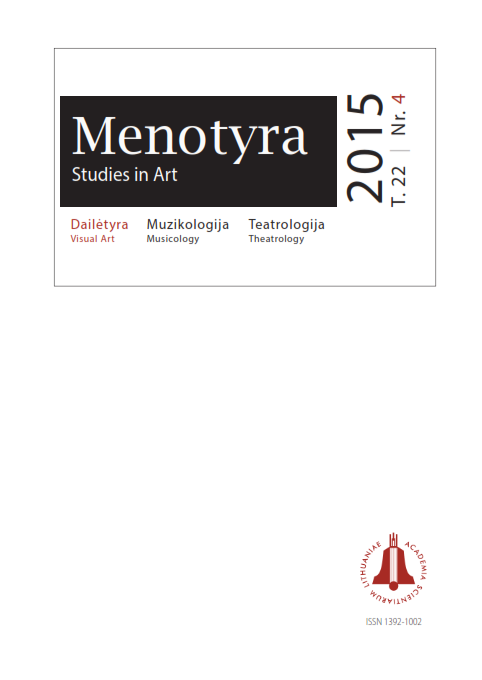Išeivystės patirtis modernėjančioje Lietuvoje: Mato Menčinsko atvejis
The experience of emigration in modernising Lithuania: a case study of Matas Menčinskas
Author(s): Laura PetrauskaitėSubject(s): Fine Arts / Performing Arts, Visual Arts
Published by: Lietuvos mokslų akademijos leidykla
Keywords: Matas Menčinskas; Lithuanians in Argentina; Lithuanians in Uruguay; migration; identity; autonomy of artist; vocational training; crafts; sculpture; modernity
Summary/Abstract: This article attempts to analyse the attitude, activities and position of a modern artist in the era of massive migration, epitomised by the experience of a Lithuanian sculptor Matas Menčinskas (1897–1942). The creative life of Menčinskas encompassed the work in South America and Lithuania, providing valuable study material for comparative analysis. The research revealed that Menčinskas, who came from a smallholder peasant family, managed to study in several art academies without support of a patron. Demonstrating courage in shaping his own life as a project, he succeeded in fulfilling his independent career path. As a typical modern artist he appreciated individuality and autonomy of an artist and grasped every career opportunity coming along his way. While living in Argentina and Uruguay and later settling in Lithuania, Menčinskas made useful social contacts which, although did not ensure him significant commercial success, helped to eke out a living and continue creating art. Private commissions for portraits, typography of news- papers, memorial sculptures, etc., as well as pedagogical work ensured him minimal income and made it possible to seek unconventionality, originality in creation and attain recognition. Artistic influences experienced by Menčinskas in emigration led to the creation of the sculpture stylistically, thematically, iconographically and technologically different from what was a commonplace in interwar Lithuania. Furthermore, the article reveals that the artist became involved in the social initiatives aimed at resolving acute socioeconomic problems, plaguing interwar city. Menčinskas worked as a teacher in a private trade school for boys established by The Society of Child Jesus with a specific purpose of teaching impoverished children vocational skills, preparing them for labour market, helping to improve their livelihoods and broaden future opportunities. Further- more, the school contributed to the eradication of unemployment, prevailing mendicancy, and reduction of social tensions.
Journal: Menotyra
- Issue Year: 22/2015
- Issue No: 4
- Page Range: 338-354
- Page Count: 17
- Language: Lithuanian

